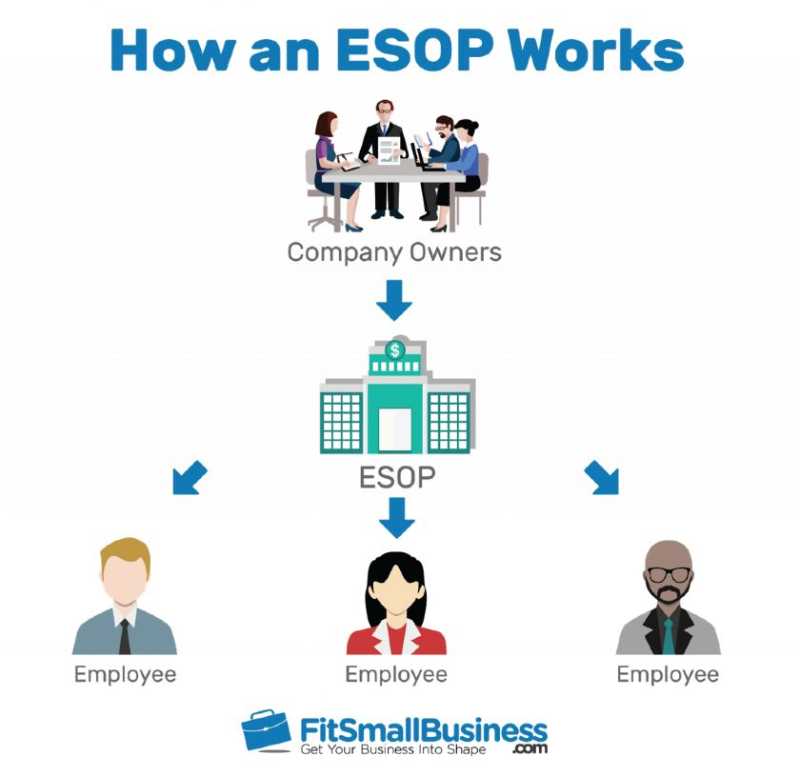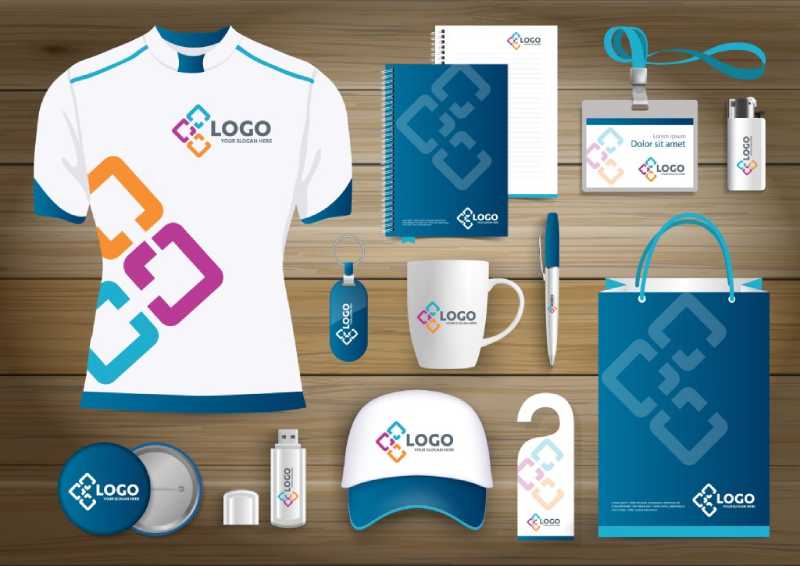When it comes to attracting top talent, you should provide competitive salary and benefits, such as paid time off, health insurance, and 401(k). However, some small businesses go beyond the average by implementing an employee perks program that offers unique incentives, such as financial perks, health and wellness benefits, team-building, employee development allowances, company culture rewards, and more.
Below are 40 traditional and creative employee perks ideas to help allure and retain highly motivated employees.
Financial Perks
Offering financial incentives to employees plays a crucial role in their overall job satisfaction. It shows your commitment to recognizing and rewarding exceptional performance, and, as a result, you benefit from increased staff retention, improved morale, and higher levels of productivity.
1. Incentive Bonus
An incentive bonus is a monetary reward given to employees for good performance, and it can have a powerful impact on their motivation and productivity. By offering financial rewards for achieving specific goals or exceeding performance metrics, you can inspire your employees to go above and beyond in their work. However, it’s important to design these bonus structures in a way that truly incentivizes the behaviors and outcomes that align with your company objectives.
2. Stock Options
Offering stock options (also known as employee stock ownership plans or ESOPs) to your employees allows them to buy company stock at a set price. This can be an attractive benefit for employees, as it allows them to potentially profit if the company’s stock price increases. Additionally, when employees hold stock options, they have a vested interest in seeing the company succeed.

3. Donation Matching
Employers who offer donation matching to their employees create a culture of giving and community support. By equally matching, or even doubling, your employee’s charitable donations, you are encouraging philanthropy and showing a commitment to social responsibility. This approach not only benefits the recipients of the donation but also boosts morale and engagement by demonstrating that the company values its workers’ personal causes.
4. 401(k) Matching
A traditional benefit offered to employees is a 401(k) plan. This type of plan allows employees to save for retirement. It is not required that companies contribute anything toward their employees’ 401(k); however, matching your employees’ 401(k) deposits is an added perk.
PRO TIP: You can choose to match employees’ percentages for percentages—however, we recommend that you cap match contributions at a specific percentage. Most companies match up to 5%. For example:
Contribution by Employee | Match by Company |
|---|---|
1% | 1% |
2% | 2% |
3% | 3% |
4% | 4% |
5% | 5% |
6% and above | 5% |
You can also choose to do an abbreviated match that does not equal a direct percentage for percentage but does offer company funds into your employees’ 401(k) plans. For example:
Contribution by Employee | Match by Company |
|---|---|
1% | 1% |
2% | 1.5% |
3% | 2% |
4% | 2.5% |
5% | 3% |
6% and above | 3% |
5. Profit Sharing
Similar to the incentive bonus, profit sharing involves distributing a portion of your company’s profits among your employees as an incentive or bonus. The key difference is that profit sharing is not performance-based. It is strictly an equal distribution of a specific amount of the profit gained in a quarter or year.
6. Holiday Bonus
A holiday bonus is a set bonus given to all employees during the holiday season (typically at Christmas). This can be anywhere from $100 per employee to over $1,000 per employee, depending on your company’s profitability during the year. Another option is to offer a gift card to a local grocery store (e.g., to purchase a turkey) or a variety store, like Amazon.

Example of how to calculate bonuses
7. Signing Bonus
A signing bonus is a payment to new hires upon accepting a job offer. While it is typically used as an incentive to attract skilled employees, it also serves as a way for companies to express their investment in the employee and kick-start the working relationship. You can offer a signing bonus in several different ways—as a one-time lump sum payment, or spread out in equal payments over a specified time.
Health & Wellness Perks
Offering perks for your employee’s health and wellness shows that you care about helping improve their lifestyle and mental well-being. When individuals prioritize self-care through regular exercise, proper nutrition, and adequate sleep, they often experience heightened energy levels and are more focused and efficient in their daily activities.
8. Fitness Reimbursement
A fitness reimbursement is a specific stipend given to pay back an employee for the purchase of a fitness membership, such as a gym membership or a wellness app. Have your employees submit a receipt monthly for reimbursement, proving they have paid for the membership. Additionally, you may want to require that your employees visit the establishment for a certain number of days per month to be eligible for reimbursement.
Another option is to provide them with a free health tracker (e.g., Fitbit). These trackers typically track the steps taken in a day. They may also track sleep habits, heart health, weight, and meals eaten. Consider holding a companywide contest and offering additional incentives to those who take the most steps in a month, or those who get the most sleep throughout the month. This promotes healthy competition amongst colleagues while helping them maintain a healthy lifestyle.
9. In-office Gym
If the majority of your staff works in your office, and you have the space, consider putting in a gym. This is an area where employees can use workout equipment (e.g., treadmill or weights) while on a break, during their lunch hour, or before or after work. It is proven that exercise helps with long-term memory and may increase creativity and productivity. An in-office gym means your employees can decrease their travel time to and from a traditional gym.
10. Wellness Clubs & Groups
Instead of a monetary contribution, such as a fitness reimbursement, put together some wellness clubs or groups within your company. These can include a walking group, where employees can walk together on their lunch breaks, or a running club, where employees meet outside of work and run together. Other options include mental health clubs (such as a book club).
Some wellness club options include:
- Exercise Groups
- Book Clubs
- Smoking Cessation Groups
- Yoga Clubs
- Financial Counseling
- Meditation Groups
- Nutrition Education
11. Personal Health Goal Incentives
Personal health goal incentive bonuses have the potential to shift company culture toward a more holistic view of employee welfare. Instead of solely focusing on traditional performance metrics, offering a monetary incentive for reaching a personal health goal acknowledges the importance of physical wellness.
Consider holding a weight loss competition and offering a bonus to the top three performers. Another approach is to pay the entry fee for any employee who enters a 5k, 10k, or marathon run. Or hold your own 5k run and hand out trophies to the winners. This not only shows your interest in your employees’ physical fitness but also helps build team camaraderie.
12. Mental Health Allowance
Mental health plays a large role in employee productivity and helps decrease absenteeism. You can help your employees by creating a mental health program that covers a wide range of services, from counseling and therapy to wellness activities. Offer up-front funds or reimbursement to those employees who wish to take part in the program. But, be sure you establish clear guidelines for what expenses are covered, such as therapy sessions, medication, or other related treatments.
13. Stress Management Options
With any job comes at least a small amount of stress. You can help curb stress in the office by offering stress management options to your employees. Some options include:
- Yoga
- Massages
- Relaxation Room
- Walking Groups
- Team Building Breaks
14. Employee Assistance Program
An employee assistance program (EAP) covers everything from substance abuse, family issues, and mental health, to wellness concerns and retirement planning. This is a confidential program funded by the company (free to employees) that provides outside counselors, resources, and referrals to assist your employees and their families.
Team-building Perks
Team building goes beyond just creating a harmonious work environment; it also contributes to improved collaboration, communication, and overall productivity. When teams engage in activities, like escape rooms or sponsored athletics, they learn to trust each other’s strengths and build better relationships.
15. Company Outing
A company outing, such as a picnic by a lake, offers the opportunity for team bonding and relationship building outside the typical office environment. By engaging in team-building exercises, outdoor adventures, or simply enjoying dinner together, your employees develop closer connections and better understand each other’s strengths and weaknesses. While company outings provide a chance for relaxation and fun, they also have tangible benefits that translate to the workplace, such as increased employee morale and motivation.

Company outings are a good way to foster camaraderie in a non-office setting. (Source: Adventureworks)
16. Virtual Happy Hour
If your employees are spread out across the country and the world remotely, consider a virtual happy hour. This is a designated time each month (we suggest Fridays at the end of the workday) that employees can get together on a video call and talk with each other. You can play music to help set the mood, determine if alcohol is allowed during the call, and facilitate games that your employees can participate in. This helps connect remote employees so they have the opportunity to learn more about their colleagues.
17. Lunch and Learn
A lunch and learn session serves two purposes; it allows employees to learn more about a specific topic, and it provides them with a company-paid lunch. These sessions can be held in-office and the food catered in. Or, if your team is remote, consider giving each employee a stipend to purchase their own lunch for the event.
The learning part of your session can include knowledge about the company, specific department goal planning, or an overall companywide course on software used. Have your team come together in a conference room or virtually via a video conference call.
18. Office Gameroom
Employees who play together stay together. However the saying goes, employees who have the opportunity to let off some steam during the day by playing games will generally be more motivated and productive. It also helps strengthen team bonds.
If you have the space within your office, even in a breakroom, consider setting up a ping pong table or putting out some cards and board games. Then allow your employees to take periodic breaks where they are allowed to go to the game room to unwind and play.

Google’s Zurich offices have a place for employees to play and unwind. (Source: LinkedIn)
19. Sponsored Athletics
Much like a company outing, you can sponsor a team for an athletics league. Then, those employees who wish to join can be a part of the team. Some possible athletics ideas include:
- Softball
- Basketball
- Football
- Soccer
Have matching jerseys made up with your company name and logo (free advertising) so that your employees have a cohesive look. Team athletics are a great way to build employee relationships both outside and inside the office.
20. Conference
A company conference is a great way to gather all employees (both in-office and remote) in the same location to discuss company happenings, financials, and goal planning. In addition to the company information sessions generally held at conferences, plan a group outing (laser tag, etc.) and paid dinners at restaurants during the conference week. You may also want to offer some company swag with your logo (e.g., coffee cups, pens, notepads, etc.) that you give free to your employees.
21. Peer Recognition
While this is not a tangible perk, offering an avenue for peer-to-peer recognition will help build rapport between your employees. It is a sign of good people management skills to communicate and show respect for others. This is likely to result in a more satisfied and connected workforce, which in turn will lead to increased morale and productivity.
Employee Development Perks
Offering training and development perks ensures your employees are skilled and understand the important aspects of their roles within your company. Highly trained employees generally lead to increased productivity, improved employee morale, and higher retention.
22. Tuition Reimbursement
Employers who offer tuition reimbursement show their employees that they value their development and are willing to invest in their future. An affordable education can lead to a more skilled and knowledgeable workforce, ultimately benefiting the company’s bottom line. Tuition reimbursement can be a specific amount of money toward a degree program that is directly related to the employee’s job or the purchase of courses that lead to a certification in their field.
23. Technology & Office Equipment Stipend
Many employers provide their employees with a company computer. This is a good idea as you can control the software added to the computer, put in preventative safety measures, and if needed, monitor use. Or, you could choose to offer a reimbursement of up to a specific amount for the employee to purchase their own computer. Additionally, consider providing or reimbursing for software that may be needed by specific departments, especially those that are not used companywide.
For remote employees, consider giving them a stipend or reimbursement to set up a home office with the needed equipment (e.g., computer, desk, office chair, printer, and more).

Example of home office setup (Source: FSB)
24. Mentorship Program
A mentorship program is a great way to help develop your employees. By pairing individuals with similar interests or professional goals, a mentorship program can facilitate knowledge transfer, skill development, and personal growth. Encourage honest communication and feedback and incorporate regular check-ins, workshops, or networking opportunities to further enrich the mentorship dynamic.
Company Culture Perks
By introducing company culture perks such as flexible work hours, remote work options, or bucket list funding, you can demonstrate your commitment to supporting a healthy work-life balance.
25. Flexible Work Hours
Allowing your employees to have a flexible work schedule lets them take care of various responsibilities outside the workplace, such as parents, caregivers, or those with health challenges. This gives the employee the freedom to structure their workday around their unique circumstances while still contributing effectively to the company’s success.
Another option is to implement a four-day workweek. With this work arrangement, your employees will work four days (32 hours) per week. This works best for salaried employees and does not change the amount they receive per paycheck. You can allow your employees to choose either Friday or Monday as their preferred day off, or the entire company can be closed one day a week, in addition to weekends.
26. Remote Work Opportunities
In today’s culture, most businesses already offer remote work opportunities. However, if your business is fully in-office you should consider offering the option of working remotely either full-time or several days a week. This arrangement offers your employees flexibility and creates a greater work-life balance.
27. Employee Referral Program
This idea involves asking your employees to recommend candidates for possible employment at your company. This can lead to higher-quality candidates. Consider offering a monetary payout to any employee who refers someone who is hired and stays with your company for a minimum of three months. This can be anywhere from $100 to a percentage of their salary.
28. Pet-friendly Office
Welcoming pets into your office can have a positive impact on your employees. Having pets around encourages regular breaks, promotes physical activity, and increases mental well-being. While you might not want 30 dogs in your office every day, you can plan one day a week that is “bring your pet to work day,” or let your employees rotate on a schedule that allows everyone to bring in their pets at least once a month.
29. Bucket List Funding
Your employees likely have a bucket list of things they would like to accomplish before they die. This can be anything from losing weight to going on a vacation to buying a house. Consider offering funding for bucket list items to help your employees reach their goals quicker. Of course, you will want to put a limit on the amount you plan to award—you probably don’t want to put out $200,000 to buy someone a house. However, you could offer $1,000 to individuals to help them fund their dreams.
30. Celebration Gifts
When a company celebrates the personal milestones of employees, they show they genuinely care about them. Consider giving your employees a bonus, cash payout, or gift card to celebrate such things as:
- Weddings
- Births
- Retirement
- Birthdays
- Work Anniversaries
Family Perks
Raising a family is costly. When companies contribute, it eases the burden on those with families and creates an atmosphere of compassion.
31. Pet Insurance
Pets get sick just like people do. Offering pet insurance, whether you contribute to the cost or your employees pay out of pocket, gives them peace of mind that their animals are taken care of. From emergency surgeries to long-term treatments, the costs can add up quickly, making pet insurance a valuable investment.
32. Child Care Assistance
Many families spend almost their entire paycheck on daycare costs just so they can work for you. This puts a strain on their expenses and is likely a source of unnecessary stress. Consider offering a child care assistance stipend to help your employees.
Another option, if you have the space, is to provide an on-site daycare facility. This is especially helpful when employees work long hours or spend the entire day away from their children. They can use their break times to check in on their children and share a lunch with them, helping connect families. This will also likely lead to fewer absences, as parents will not have to leave work as early to pick up their children (which often means fees if they are late picking up from daycare facilities).
33. Paid Maternity/Paternity Leave
Regular maternity and paternity leave is mandated by FMLA laws—which require companies to allow up to 12 weeks of unpaid time off to care for children following birth or adoption. By offering paid leave to parents, you are showing them you are committed to their work-life balance. Consider offering at least half of the required leave as paid (six weeks). Also, allow your employees to use their sick and/or accrued paid time off to offset any weeks they are not being paid.
Company Perks
Company discounts and swag perks are not just about giving away freebies; they are powerful tools that boost employee morale and build a strong sense of community. Also, when potential hires see that a company offers attractive discounts and fun swag perks, it sends a positive message about the company’s dedication to creating an enjoyable work environment.
34. Product Discounts
Offering exclusive discounts on popular products or services can make employees feel valued and appreciated, leading to increased loyalty and job satisfaction. Additionally, when your employees become advocates of the products they use through these discounts, they are more likely to recommend them to friends, family, and social networks. This word-of-mouth marketing has a positive impact on sales and brand recognition.
35. Company Swag
Providing branded merchandise or company swag as perks can serve as a constant reminder of the company’s identity and culture, fostering a sense of pride among employees. These products serve as excellent marketing tools in public settings, inadvertently amplifying brand visibility while also promoting a positive image for the company.
Some examples of company swag include
- Coffee mugs
- Pens
- Clothing—T-shirts, hoodies, jackets, etc.
- Water bottles
- Tote bags
- Laptop sleeves

Example of company swag ideas (Source: Consumer Brand Builders)
36. Commuter Reimbursement
For employees who work in your office, they will incur commuter expenses, whether it be wear and tear and gas in their vehicles, train tickets, or ride-share expenses. You can choose to offer a stipend to your employees to help with these expenses. Additionally, you can provide mileage reimbursement to employees who must travel during working hours. The standard federal reimbursement rate for mileage in 2024 is 67 cents per mile.
Paid Time Off Perks
Most companies already offer paid time off in the form of vacation, holidays, and sick leave. However, there are a few other opportunities to give employees additional paid time off.
37. Birthday PTO
Every employee has a birthday and this is an excellent opportunity to give back. In addition to giving a monetary reward, you can also allow your employees to take the day off. This can either be a paid day off granted on the actual day of their birthday or a floating PTO day they can take any time during the month of their birthday. This paid time off will be in addition to any holidays, vacation, or sick time allotted.
38. Floating Holidays
Not all employees celebrate the same holidays. In these instances, you could allow employees to use a floating holiday. The floating holiday is a free paid day off that replaces a company holiday day. This floating paid day off can be used when an employee chooses to work on a day traditionally deemed a holiday by your company.
You can also give your employees a set amount of holidays when your company is closed and nobody is required to work, as well as an additional floating holiday paid day off for them to use at their convenience or to cover a celebrated holiday that your company is not closed.
39. Volunteer PTO
Offering a paid day off (or half day paid) for your employees to volunteer their time outside of work is an excellent way to help give back to the community. If you implement this into your company, make sure to clearly outline the details of what is considered volunteer work. We recommend requiring that all paid volunteer days result in working for a nonprofit organization. This would not include things like volunteering at a school but would include things like volunteering at a soup kitchen.
40. Unlimited PTO
Unlimited paid time off allows employees to take off as much time as they need within a given year. This type of PTO is not eligible for rollover to the next, as there is no allotted amount of days. By giving your employees the freedom to choose how many days they need, you allow them to take time off for vacation, when sick, or for appointments as they arise.
This type of policy is good for businesses as employees generally do not take off a large amount of time. If, however, you find that your employees are taking off an excessive amount of time, you may want to revert back to a traditional PTO policy.
How to Choose the Right Employee Perks
When it comes to choosing the right employee perks for your business, it’s important to think beyond traditional benefits and consider what will truly resonate with your employees. Personalized perks, such as flexible work schedules, professional development, or additional paid time off options, can go a long way in showing employees that you value their individual needs and career growth.
When determining which employee perks are right for your business, consider the following:
- Survey your employees and gather feedback on what perks would make the most impact for them.
- Stay adaptable. As your workforce evolves, so should your offerings.
- Determine which perks are within your company budget.
- Consider the stage your company is in and the demographics of your employees. A startup with young, tech-savvy employees might place a higher value on wellness, whereas a more established business with a diverse workforce might focus more on paid time off and flexible schedules.
- Evaluate if the employee perks align with your company culture and values.
- Look at what your competitors are offering so that your company stays on top of industry trends.
Bottom Line
By offering a variety of employee perks that cater to different needs and preferences, you can create a positive work environment that fosters loyalty and productivity. From flexible work schedules and wellness programs to professional development opportunities and bonus incentives, employee perks ideas are endless. Companies should strive to continually innovate and enhance their perk offerings to ensure they remain competitive in attracting and retaining top talent; all part of employee management.